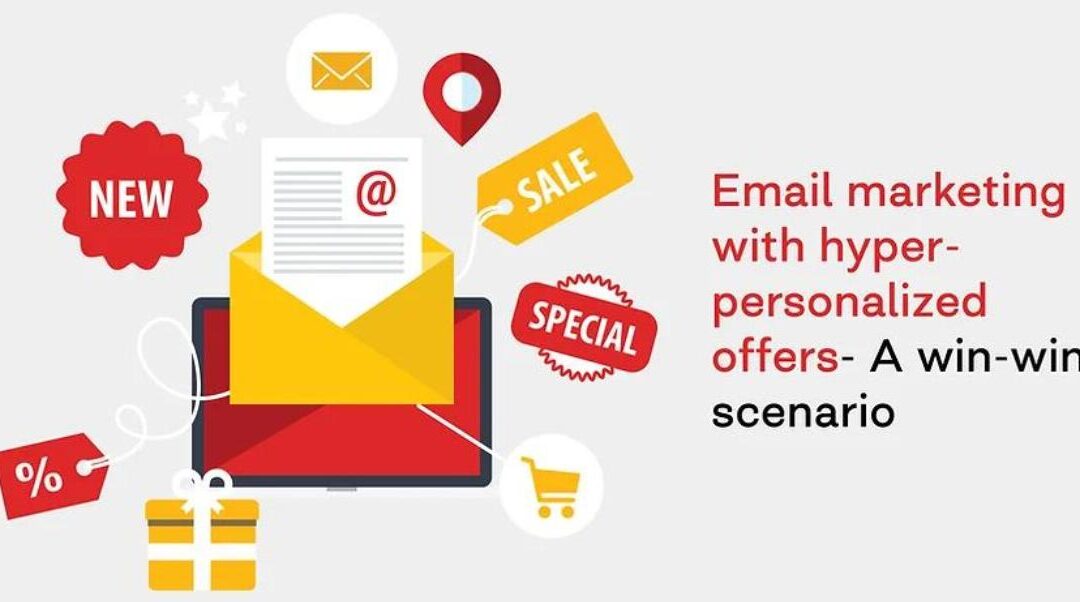Last week, I got an email offer from an eCommerce store on a pair of red stiletto shoes at a great discount. What about it, you may ask. First of all, I don’t wear stiletto shoes and if I do, my wife would never approve. Secondly, this wasn’t the first time they sent an offer on something I did not need. So what did I do?
I unsubscribed from the store’s mailing list.
Email marketing is by far the most used channel for eCommerce merchants in 2022. As a store owner, you may find it difficult to send the right offers to the right customers. I mean, you may be personalizing your offers according to different customer categories, but your email campaigns don’t convert as much as they were supposed to.
On the other hand, by sending your customer’s hyper-personalized offers, you are telling them that you understand their individual needs and are ready to fulfill them ahead of your competition. To achieve that, you need to figure out how to send offers that are relevant, attractive and timely to each of your customers.
What do eCommerce Customers Expect from You?
Let’s first see what your customers do not expect from you. They do not expect one-size-fits-all offers in their inbox. Your male customers do not expect red stiletto shoes and your female customers do not expect beard trimmers on offer (unless it is their anniversary).
They expect you to send them emails with offers on the products they want to buy, which is essentially your goal for creating a win-win offer scenario. And to do that, you need to collect insightful customer data that will help you hyper-personalize their offers.
You need to be collecting first-party data from your customers by offering them something of value in return. As the Marketoonist rightly put, in his LinkedIn post, “There’s a value exchange — consumers give up personal information and brands give something in return. Consumers need to feel that the trade-off is worth it.”
Creating a loyalty program that offers value to your customers will give them the confidence to share their personal data with you. In the same LinkedIn post, the Marketoonist quotes research data that supports this argument. ‘GI Insight found that 64% of consumers were happy for a company to collect info on shopping behaviors and personal preferences in return for “relevant and timely offers,” but 76% were very reluctant to hand over data without a “proper loyalty program in place.”’
Creating Hyper-Personalized Offers
Online shoppers often visit multiple stores casually browsing for the product they want. When they visit your store, you are collecting data in the form of website impressions based on their browsing habits. Using this data, the data your customers have shared with you via surveys and the data from their past purchase history, you can create hyper-personalized offers that have the highest conversion rates.
Knowing which customer expects what is key to orchestrating the right deal in each case. It’s obvious that this cannot be done manually. But most apps available on an eCommerce platform like Shopify do a very basic level of personalization.
You need a product that integrates well with your eCommerce store with a robust hyper-personalization capability that matches your customers’ preferences, demographics and psychographics to the offers they expect.
What Does a Hyper-Personalized Offer Look Like?
For the most part, creating a hyper-personalized offer on email is about knowing what your average customer wishes to buy or has been looking up recently in your store. You need to provide the right offer at the right time to the right customer to create an offer that sells.
Let us say your customer, Ms. Matilda has not bought anything from you for the past six months. She has been browsing your store for shoes and has added a few pairs to her wish list. From the data you have collected from her using your loyalty program, you know that her birthday falls next week. So, you send her an offer email on a pair of red stiletto shoes, wishing her a happy birthday.
But that’s not all. You also know, from her past purchase history, that she last bought a handbag from you two years ago. So, in your email to her, you also push a handbag with a flat 25% off, if she buys the shoes. Knowing your customer needs the handbag is what differentiates commonplace personalization from hyper-personalization. Your competitors only sold her the shoes. Only you knew that the handbag on offer is what she needed to buy the shoes.
Personalization is available everywhere you see in the eCommerce space, but hyper-personalization is what your business needs to grow rapidly.
Email marketing with hyper-personalized offers helps you beat the competition by creating the right offers you customers want.
In short, hyper-personalized offers are data-driven, timely, customer-centric and appropriate to an occasion. Our app Qubriux can help you identify hyper-personalized offers for email campaigns that convert more.
Successful Email Marketing in 2022
In a crowded eCommerce marketing space, every advantage you have over your competition helps you grow that much faster. Sending hyper-personalized offers on your email marketing is just the tip of the iceberg in devising a marketing strategy that gives your business the boost it requires in 2022.
Your customers expect you to be ahead of the curve with the offers you send them. And with the help of the right tools, you will simply convert more on every email campaign you send out. What’s more, you will be actively creating a happy and loyal customer base while you are at it.
For more information on hyper-personalization of email marketing with Qubriux eCommerce, visit www.qubriux.com or email us at cs@qubriux.com.
Start hyper-personalizing your email campaigns today. Install Qubriux: https://apps.shopify.com/qubriux

